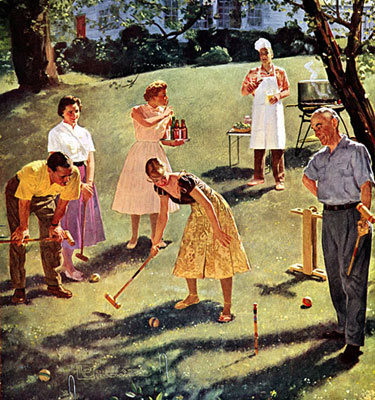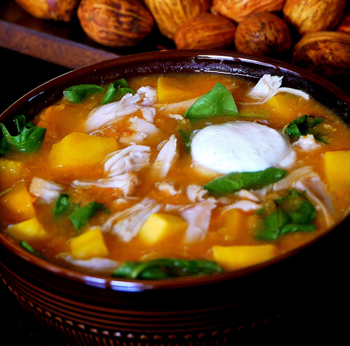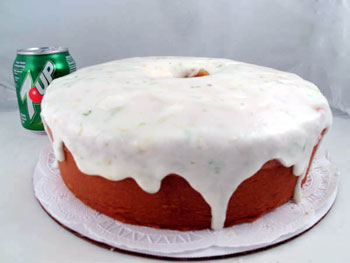 Years ago, when I was living on Beacon Street in Boston’s Back Bay, I was invited to a rooftop barbecue by my neighbor. Everyone was bringing something, so I thought a pound cake with fresh strawberries would be nice. It was a great party, and the host, who was raised in North Carolina, prepared an elaborate feast of primarily Southern Cuisine – ribs, chicken, baked beans, succotash, corn bread, etc.
Years ago, when I was living on Beacon Street in Boston’s Back Bay, I was invited to a rooftop barbecue by my neighbor. Everyone was bringing something, so I thought a pound cake with fresh strawberries would be nice. It was a great party, and the host, who was raised in North Carolina, prepared an elaborate feast of primarily Southern Cuisine – ribs, chicken, baked beans, succotash, corn bread, etc.
When it came time for dessert, everyone seemed to enjoy the pound cake and berries and I asked our host if he liked the cake. He said it was good and asked if I made it with 7UP. When I said that I had NOT, he replied, “then this is pound cake’s cousin – a real pound cake has 7UP in it!” When I saw this recipe in the Summer Entertaining issue of Cook’s Illustrated, I decided to try it. It’s a great buttery cake with a delicious lemon-lime flavor. I guess my neighbor knew what he was talking about!

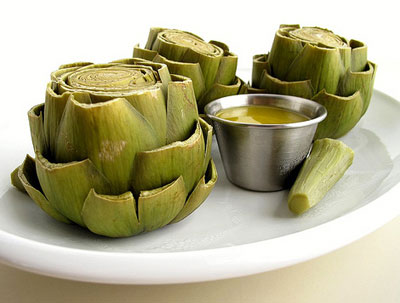 Most people look at an artichoke and think: "What do I do with this?"
But artichokes only look intimidating, they're actually easy to prepare
once you know how. Originally from the Mediterranean, artichokes have a
history that dates back to Roman times. There are countless cultivated
varieties, especially in Italy, where artichokes are enjoyed in many
different preparations including raw salads, stuffed and baked, steamed,
grilled, etc. In the States we have just two varieties: the large globe
and small baby. The simplest way to prepare artichokes is steaming. Not
only is it easy to do, the method also retains the subtle flavors that
make artichokes so revered.
Most people look at an artichoke and think: "What do I do with this?"
But artichokes only look intimidating, they're actually easy to prepare
once you know how. Originally from the Mediterranean, artichokes have a
history that dates back to Roman times. There are countless cultivated
varieties, especially in Italy, where artichokes are enjoyed in many
different preparations including raw salads, stuffed and baked, steamed,
grilled, etc. In the States we have just two varieties: the large globe
and small baby. The simplest way to prepare artichokes is steaming. Not
only is it easy to do, the method also retains the subtle flavors that
make artichokes so revered.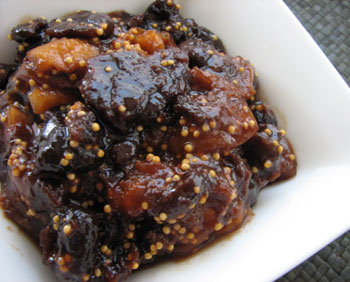 I spent a year living in Europe, and six months of that was in Italy. Having eaten a lot of Italian food, I like to think I understand it, perhaps just a little. In fact, whenever I try to recreate an Italian dish I think back to earlier versions that I've eaten. What was it that I liked about it? What was the essence of the dish?
I spent a year living in Europe, and six months of that was in Italy. Having eaten a lot of Italian food, I like to think I understand it, perhaps just a little. In fact, whenever I try to recreate an Italian dish I think back to earlier versions that I've eaten. What was it that I liked about it? What was the essence of the dish? Well I'm back. I guess I took a vacation of sorts. Since my Mom was visiting I took some time to hang out and just relax. Except we didn't relax at all. If we weren't out and about, we were cooking and cooking and cooking.
Well I'm back. I guess I took a vacation of sorts. Since my Mom was visiting I took some time to hang out and just relax. Except we didn't relax at all. If we weren't out and about, we were cooking and cooking and cooking. The days before Easter Sunday are hellish for supermarket workers in Italian-American cities such as Chicago, Philadelphia, and Providence. That's because every Italian woman, whether practicing Catholic or not, will be storming her local supermarket to purchase an obscene amount of eggs. (My mom used to buy between 12-15 dozen every year.) Lord help the poor dairy manager who runs out of eggs.
The days before Easter Sunday are hellish for supermarket workers in Italian-American cities such as Chicago, Philadelphia, and Providence. That's because every Italian woman, whether practicing Catholic or not, will be storming her local supermarket to purchase an obscene amount of eggs. (My mom used to buy between 12-15 dozen every year.) Lord help the poor dairy manager who runs out of eggs.